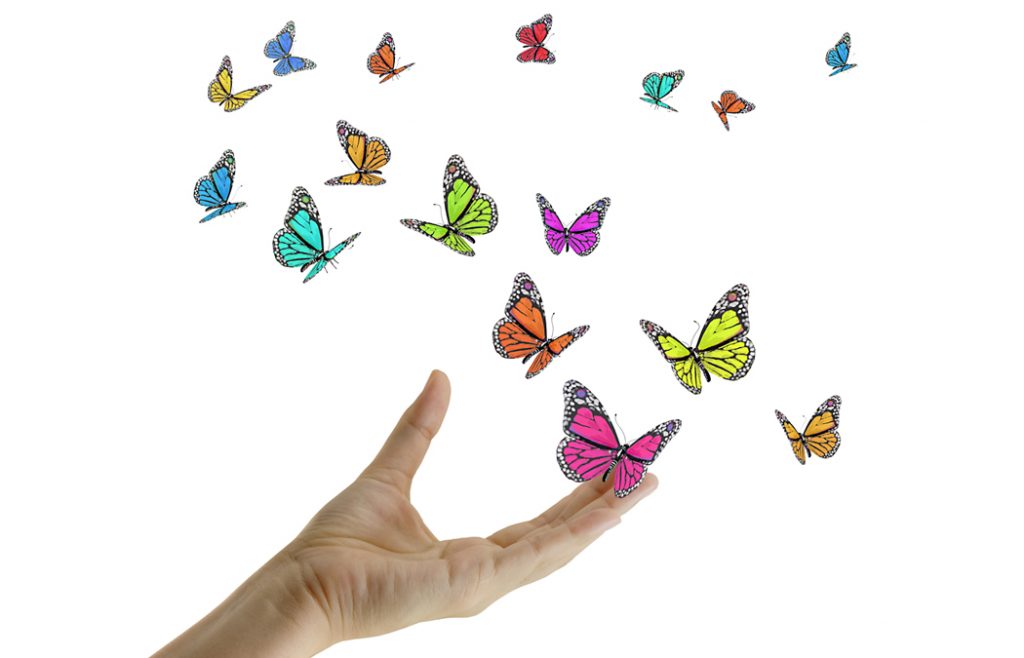
Last month I talked about a technique of releasing nonproductive patterns in the mind by asking questions in a gentle way. This month I’m going describe this “release technique” more fully.
Feelings are experienced as a sensation in the body. Thoughts usually accompany these feelings, and they may be about many different aspects of the feeling.
Thoughts are Distinct from Feelings
Generally, the first thoughts are labels that define the feelings for us. These are thoughts like “I’m mad” or “I’m happy.”
Other kinds of thoughts inform us of the cause of the feeling, such as “It’s my fault I feel like this,” or “This situation is making me feel like this.” Judgments may also be present, such as “This is good,” or “This is bad,” “I shouldn’t feel like this,” or “I’m glad I feel like this.”
More complex ideas may attach to feelings as well, such as “This feeling will never go away,” or “This feeling means something about me.” Usually, who we think we are—our identity—includes many of these patterns of feelings with thoughts attached to them. Although these thoughts and feelings appear to occur simultaneously as a single experience, they are actually separate.It turns out this is important for releasing toxic emotions.
Feelings on their own generally do not stay around for a long time—they naturally want to leave. The thoughts we have about feelings connect us to them and perpetuate our feelings without us even realizing it. Basically, releasing is a way of letting go of this hidden attachment and letting the feelings naturally dissolve. When the stuck feelings dissolve, we are left in a state of greater clarity and ease.
Usually, the thoughts that keep a feeling stuck are about why that feeling shouldn’t be there and the negative thing it means about us. “I shouldn’t feel this way because it means I have failed” is an example of an idea that gets attached to a feeling. This thought becomes a way of resisting the feeling—and the resistance keeps the feeling stuck.
Often, if we think about it, our mind will tell us the exact opposite: “If you don’t resist the feeling, it will persist and destroy you.” Even though this does not work in the long run—as feelings tend to return if we have not felt them—the mind can be very persuasive because the feeling may be uncomfortable. Identifying these judgmental thoughts and gently recognizing that they are simply thoughts and not facts is one way of breaking the attachment. When we do this, we can be open and allow the feeling to be there just as it is. Although this may be intense at first, the feelings tend to release and let go of us if we let go of them.
Identifying What the Mind Wants
Another powerful way to release is to identify the “want” connected to the feeling. The main wants of a human being are for approval, control, or safety. Feelings tend to be connected to one of these wants. Letting go of the wants involves first identifying which want is connected to the feeling, and then letting it go with questions like, “Could I let go of wanting approval?” Our mind can become fixated on wanting, and releasing these wants allows the feelings to leave.
There are two main schools that teach releasing techniques: the Sedona Method and the Release Technique. Although their approaches differ slightly, the basics are mostly the same. Through asking questions and practicing a welcoming and allowing attitude, these techniques teach the ability to let go of feelings.
“Releasing is a way to bypass the mind and all its concepts,” says Release Technique teacher Ralph Zeitlin. “When we rid the mind of wanting control, security, and approval, each moment becomes a moment of pure joy.”
Although releasing is natural, it does take some practice and direction to perfect it. To get a better sense of how it works and what it can offer you, take advantage of local groups that offer free releasing sessions and online resources.
Ralph Zeitlin will offer a Release Technique workshop in Fairfield June 1-2. For more information, call Radhika at (641) 472-9260.
David Seagull, LISW, is a therapist in Fairfield, Iowa. Visit DavidSeagullTherapy.com.
